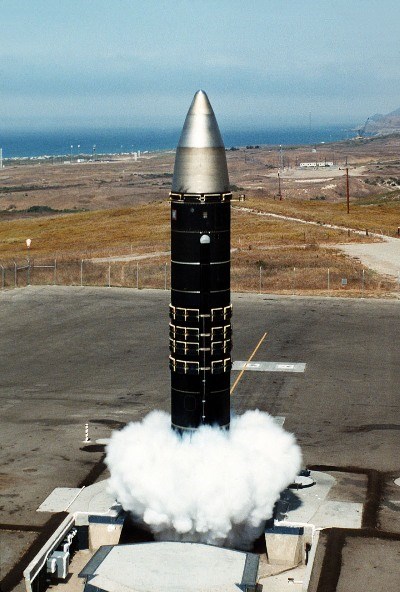Part of a series of articles titled Intercontinental Ballistic Missiles.
Previous: The Minuteman Missile
Article

USAF
The MX or Peacekeeper Intercontinental Ballistic Missile (ICBM) was the last type of ICBM deployed by the U.S. Air Force in the Twentieth Century. Several innovations made the Peacekeeper one of the most lethal nuclear weapons in history.
The use of a Kevlar epoxy composite made the Peacekeeper's airframe much lighter than previous ICBM's, allowing it to hold ten warheads. The Peacekeeper was also the only ICBM to use a cold launch technique. This meant the missile was literally blown out of the silo using steam pressure, then its first stage rocket would ignite on the surface for lift off. (This technique is also used for Submarine Launched Ballistic Missiles). The Peacekeeper weighed 192,300 pounds, about two and a half times a Minuteman. Much of this weight was to help deliver ten 300 kilton warheads to targets up to 6,800 miles away.
Great consideration was given to a rail based deployment for the missile in its early development. This generated considerable controversy in communities that would have been affected in the Great Basin of Nevada. This idea was finally shelved. Instead, it was decided to deploy 50 Peacekeepers in modified Minuteman silos across southeastern Wyoming, in an area directly north of Cheyenne. Peacekeepers were operational from 1987 through 2005.
Note: The missile is now referred to as the Peacekeeper. While under development it was first called Missile-X for Missile-eXperimental. The MX name was most commonly used by the media and during debates before its eventual deployment.
Part of a series of articles titled Intercontinental Ballistic Missiles.
Previous: The Minuteman Missile
Last updated: October 20, 2020